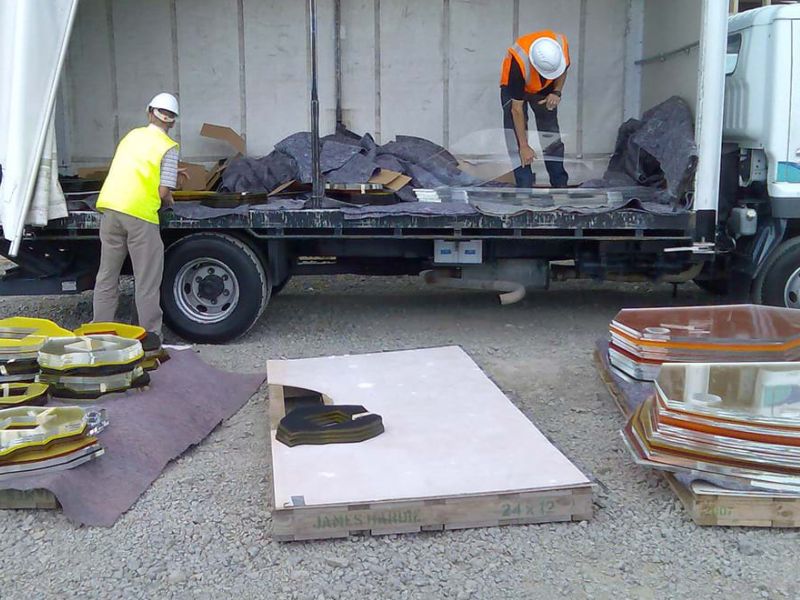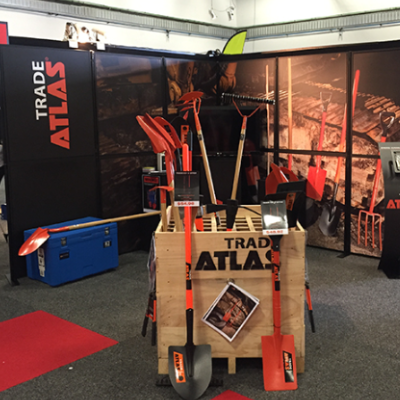Navigating Event Logistics in Australia and Ensuring Smooth Kit Transportation
Organising events and exhibitions in Australia can be a rewarding experience, but it comes with its fair share of challenges, especially when it comes to event logistics. Australia is a big place, with a huge variety of venues!
Organising events and exhibitions in Australia can be a rewarding experience, but it comes with its fair share of challenges, especially when it comes to event logistics. Successfully managing the transportation of exhibition and event gear around our vast country requires careful planning and consideration. In this blog, we will explore the key considerations for event logistics in Australia, the best way to send exhibition and event gear, potential challenges when freight is transported to different states, issues with freight and courier companies, and essential steps to ensure your exhibition kits arrive on time and undamaged at their destination.

Key Considerations for Event Logistics in Australia:
Distance and Accessibility: Australia's vast geographical expanse means that event roadshows often take place with huge distances between venues. When planning event logistics, consider the accessibility of the venue and the transportation options available, such as road, rail, or air freight. Carefully consider customs issues when getting items delivered from offshore and also consider the differing paperwork requirements and pick-up issues depending on whether you freight by road, rail or air.
Weather Conditions: Australia experiences diverse weather patterns across different states and territories. Be mindful of weather conditions that may affect the transportation of exhibition gear and plan accordingly, especially during extreme weather events.
Freight Timetables: Most freight companies do not deliver to the majority of destinations daily, therefore your goods may spend a period of time ‘on hold’ or awaiting the next freight movement if not well timed. Being aware of the timetables of the various freight carriers can reduce delays and frustration.
Venue Restrictions: Check for any restrictions or limitations the event venue imposes regarding delivery timings, unloading areas, and access points. Some venues require bookings in order to access the loading dock, and some others have loading dock areas so small that a regular truck cannot gain access. Older hotels and function venues often have small or non-existent goods lifts, meaning many have faced difficulties arriving on-site with goods that cannot move through the venue to their destination. Adhering to these guidelines will ensure smooth gear transportation and setup. Remember too, that many event venues will have a lot of gear arriving, so don’t risk your items being lost at the location!
Best Way to Send Exhibition and Event Gear:
Freight Services: Engaging professional freight services is often seen as the most reliable way to transport exhibition gear. Most freight companies have expertise in handling and securing delicate equipment and offer various transportation options tailored to your specific needs. But they also have their own logistics issues, with gear being transferred between trucks etc, from place to place.
Where possible, send gear direct to your installer - that way, your gear will less likely go missing. Better still, get the installer to transport the equipment for you. We constantly find that any issues with delivery instructions, however minor, result in freight companies not delivering items. They are dealing with such big volumes that they tend to simply not deliver if there are any obstacles in their way - real or not!
Palletising and Crating: Properly palletise and pack the exhibition gear to protect it during transit. Label the packages clearly to facilitate easy identification and reduce the risk of mishandling. Some freight companies in Australia are simply better at dealing with pallets than others, whereas others are better with smaller items. 15 years of experience has taught us who to use for what (not that we’ll publish that here!)
Tracking Systems: Choosing freight companies that offer regular scanning updates as your goods move through their network can allow you to monitor the location of your exhibition kits during their journey, helping with transparency and timely updates. And if you don't trust their system, you can always pack an Apple Air Tag in your parcel!
Challenges with Freight to Different States:
Remote Locations: Some regions in Australia, especially in the Northern Territory and parts of Western Australia, are more remote and less accessible. Freight companies will often allocate their work in these areas to a local agent, meaning your gear is on the same vehicle irrespective of which carrier you choose. Transportation to these areas may take longer and incur higher costs.
State Inconsistencies: Some states are harder to send freight to than others. For instance we have historically found that regional Victoria and metro Melbourne can be very tricky for managing freight.
Issues with Freight and Courier Companies:
Delays: Freight and courier companies may encounter unforeseen delays due to weather, mechanical issues, or other logistical challenges. If their trucks are full on a particular leg of the journey it may be your items left behind! Always build in some buffer time when scheduling deliveries. We have seen many instances of freight trucks breaking down as many of their vehicles are over-worked.
Damages: Improper handling or inadequate packaging can lead to damages during transit. Choose reputable companies with a track record of safe and secure transportation. Our experience is that goods are most likely to be damaged when shipping with TNT and Toll, whereas Cope and Border Express typically take more care.

Steps to Ensure Timely and Safe Delivery:
#1 Plan Ahead: Start the logistics planning well in advance to accommodate potential delays and hiccups along the way.
#2 Partner with Trusted Providers: Research and engage with experienced freight and courier companies with a good reputation for reliable service. We have a list that we worked with because we know we can trust them.
#3 Insurance Coverage: Consider purchasing insurance for your exhibition kits to safeguard against any potential damage during transportation. Bitter experience says it is worth it, although the paperwork to make a claim can be excessive!
#4 Communication: Maintain clear communication with the freight company, event organisers, and venue staff to coordinate the logistics efficiently. Have key contacts each step of the way, with each and every company being used, who are ‘working your corner’, and helping to ensure your event logistics are under control.
#5 Contingency Plans: Have contingency plans in place for emergencies or unexpected circumstances, such as alternative transport options or backup equipment. Consider alternative delivery addresses. Avoid delivering direct to venues, and instead deliver to the installer or even to a local hotel where you have contacts going to your event.
Navigating event logistics in Australia requires careful consideration of distance, weather conditions, transportation regulations, and venue restrictions. Engaging professional freight services, tracking systems, and ensuring proper packaging are key to securely sending exhibition and event gear. While challenges may arise, timely planning, communication, and partnering with trusted providers will help ensure your exhibition kits arrive on time and in pristine condition, setting the stage for a successful event.
Need some help
So, what next?
At Displays 2 Go, we’ve been freighting display and exhibition materials around the country for over 15 years. We understand what works, and we have great relationship with the companies we choose to work with.
Talk to us today about how we can help you and your business.
